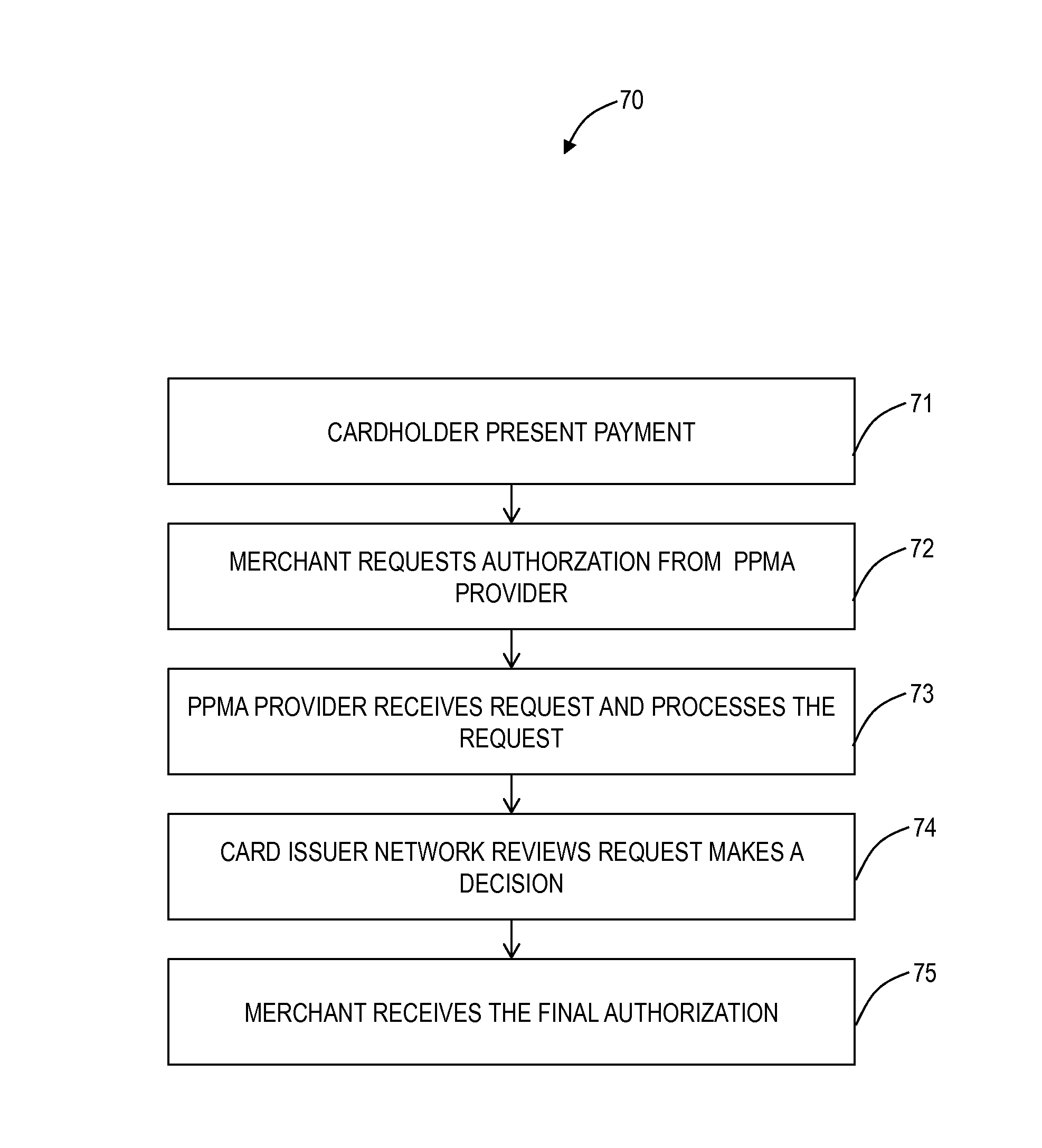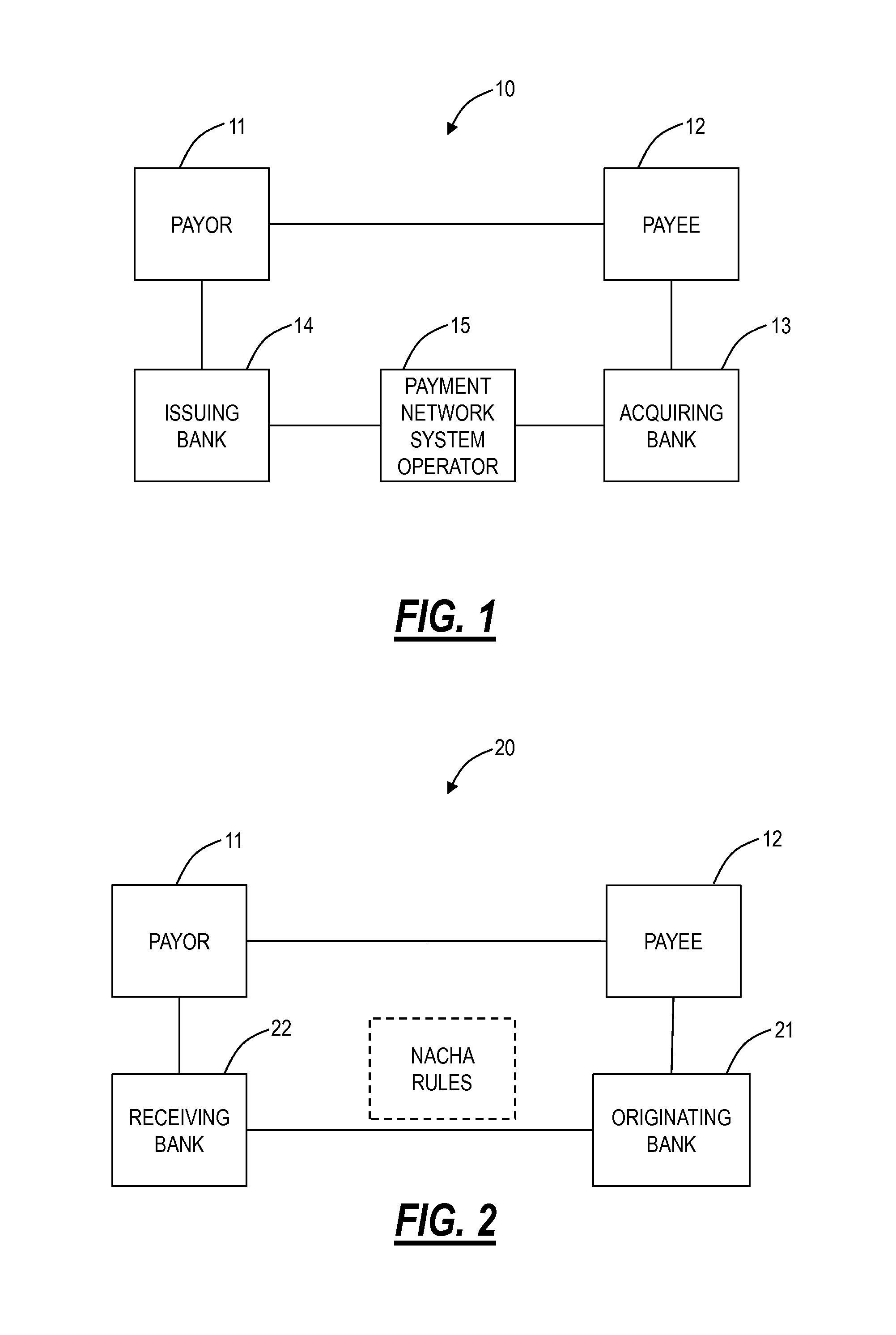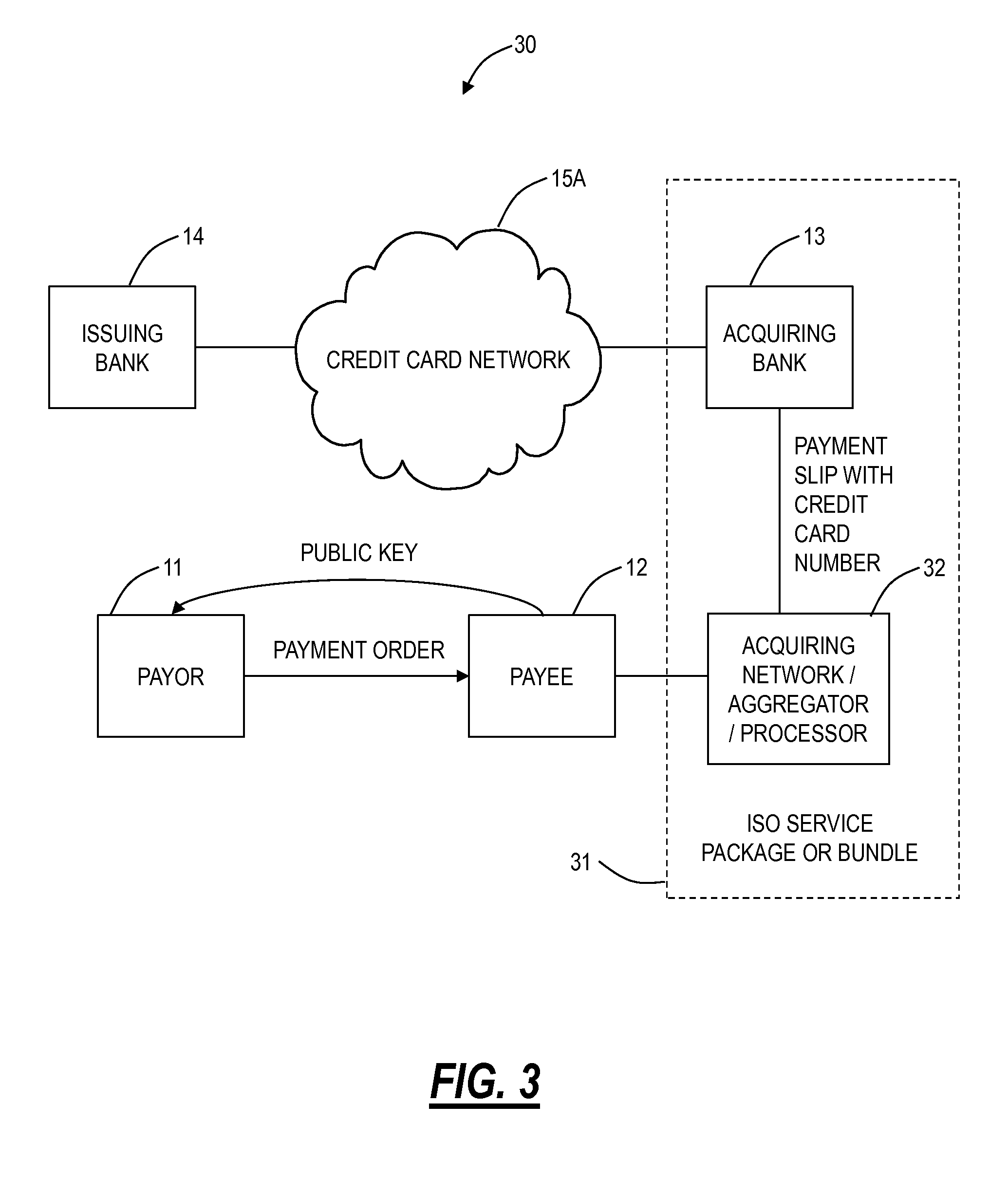Systems and methods for prepaid merchant payment services
a merchant payment and system technology, applied in the field of electronic payment systems and methods, can solve the problems of not always easy to identify, difficult to identify, and difficult to identify elements of risk responsibility, and achieve the effect of reducing the overall risk level associated with the process
- Summary
- Abstract
- Description
- Claims
- Application Information
AI Technical Summary
Benefits of technology
Problems solved by technology
Method used
Image
Examples
Embodiment Construction
[0015]In various exemplary embodiments, a computer implemented method, a system, and software provides a new processing origination model allowing a new 6th party in payment processing systems and networks, to inspect transactions before they are authorized, enabled or further processed by the payment or settlement network. This new processing delivery system and method may limit or reduce the service operators risk exposure to a defined limit, thereby improving the service providers' ability to manage a known and quantifiable risk level per merchant while limiting the system implementer's total amount of risk and improving both the speed of underwriting and merchant approval process.
[0016]Referring to FIG. 1, specifically, the five parties of an electronic payment processing network 10 may be labeled as follows: a first party in these systems is the holder of a payment form or branded network payment account holder (i.e., a payor 11), the second party is the payment acceptor or mer...
PUM
 Login to View More
Login to View More Abstract
Description
Claims
Application Information
 Login to View More
Login to View More - R&D
- Intellectual Property
- Life Sciences
- Materials
- Tech Scout
- Unparalleled Data Quality
- Higher Quality Content
- 60% Fewer Hallucinations
Browse by: Latest US Patents, China's latest patents, Technical Efficacy Thesaurus, Application Domain, Technology Topic, Popular Technical Reports.
© 2025 PatSnap. All rights reserved.Legal|Privacy policy|Modern Slavery Act Transparency Statement|Sitemap|About US| Contact US: help@patsnap.com



